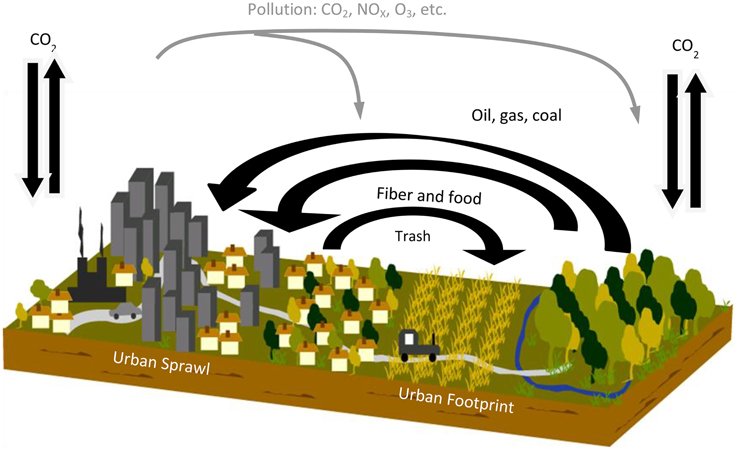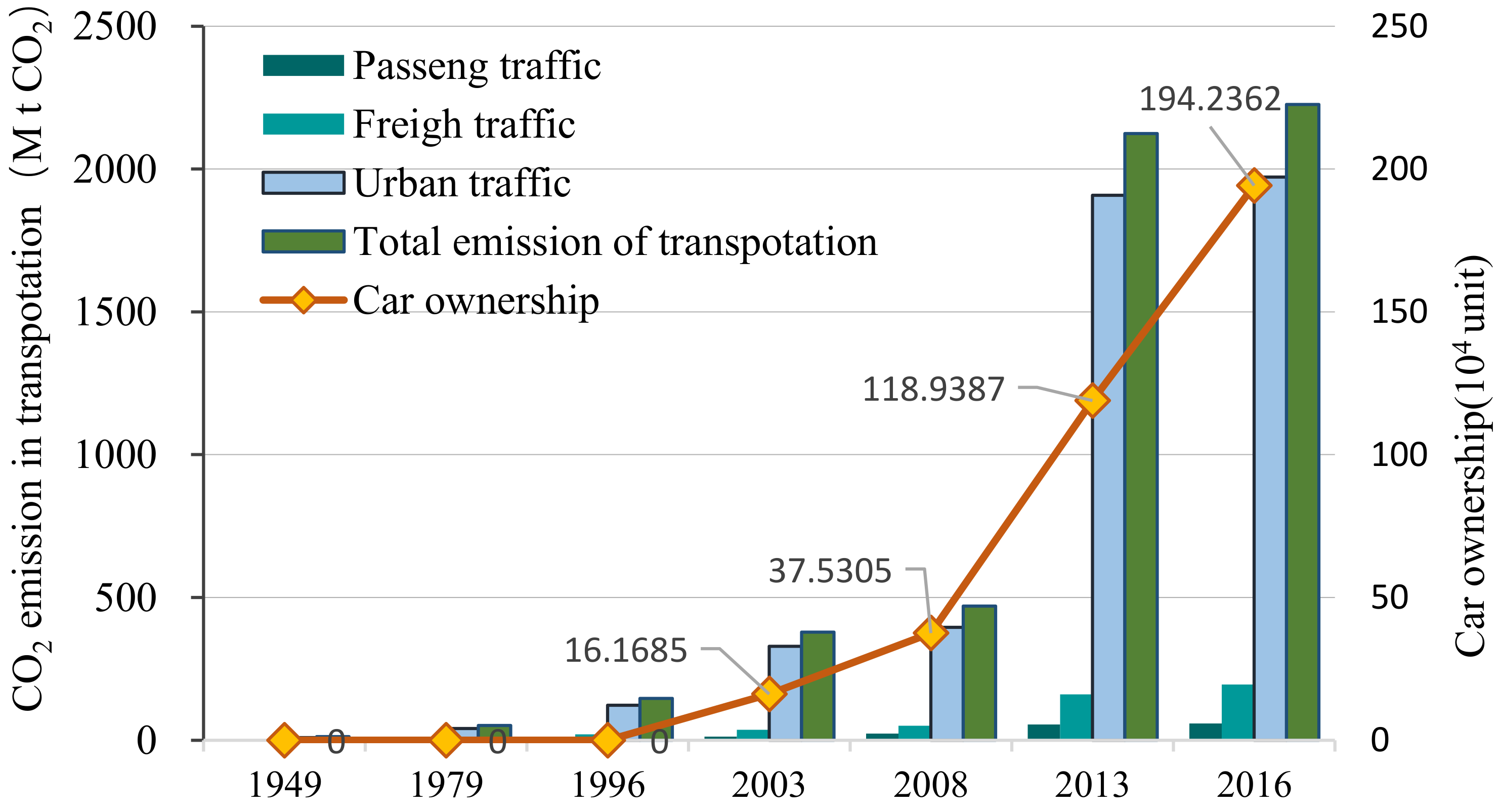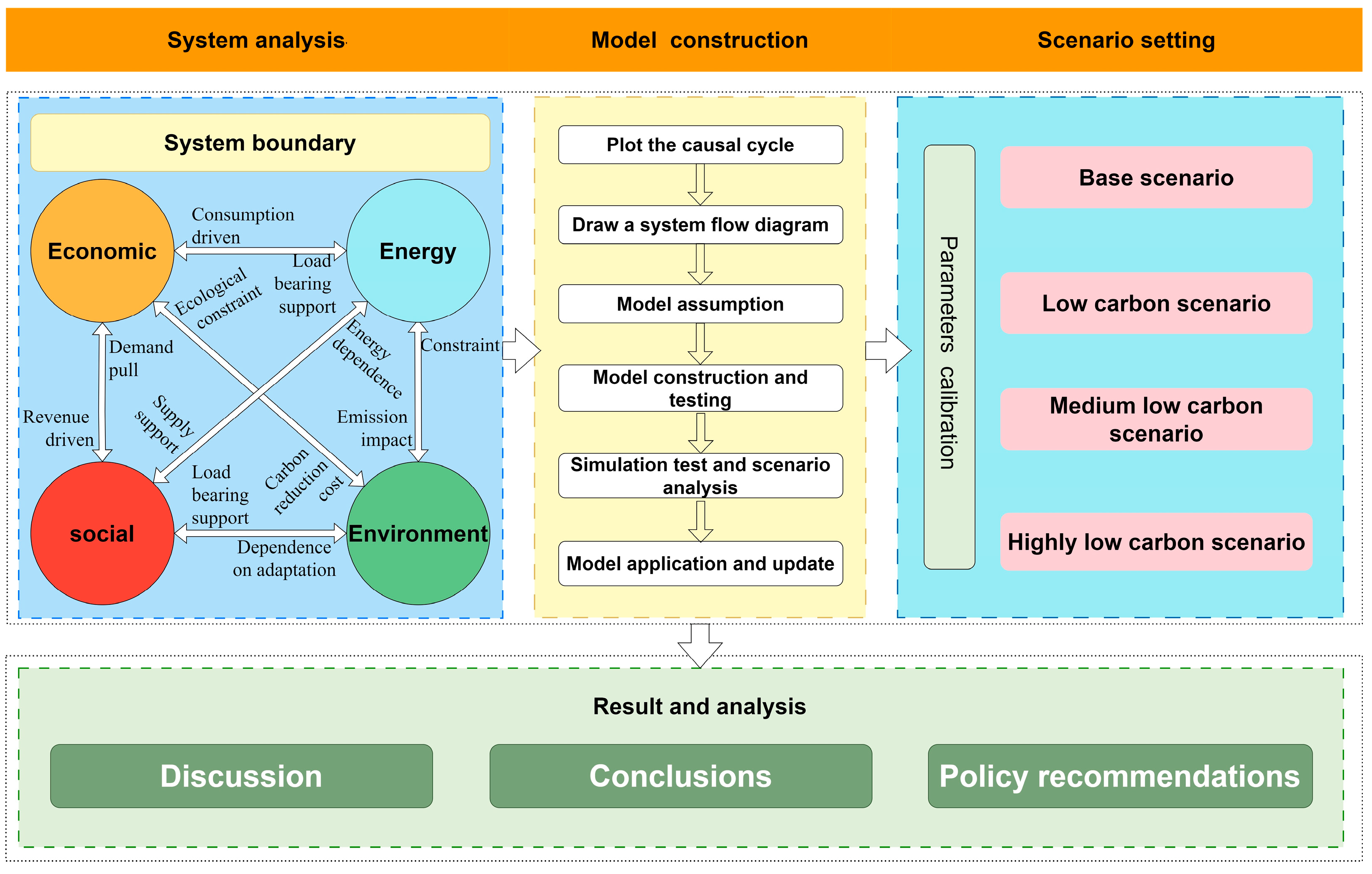How urban sprawl reduces natural carbon sink capacity

The increasing trend of urbanization has led to the expansion of cities into surrounding natural areas, resulting in urban sprawl. As cities grow, natural habitats such as forests, wetlands, and grasslands are being replaced with urban infrastructure like roads, buildings, and parking lots. This transformation not only affects biodiversity but also disrupts the natural carbon cycle. Urban sprawl reduces the capacity of natural carbon sinks, exacerbating climate change. Understanding the relationship between urbanization and carbon sequestration is crucial for mitigating the impacts of climate change and promoting sustainable development in urban areas. Effective land use planning is essential.
- Impact of Urban Expansion on Carbon Sequestration
-
Understanding the Impact of Urban Expansion on Natural Carbon Sequestration
- What is the impact of urban expansion on the global carbon cycle?
- Changes in Land Use and Land Cover
- Urban Energy Consumption and Emissions
- Urban Carbon Mitigation Strategies
- What is the impact of urban sprawl on carbon sequestration and emissions?
- Effects on Carbon Sequestration
- Increased Emissions due to Urban Sprawl
- Strategies for Mitigating the Impacts
- Mitigating Urban Carbon Footprint: Strategies for Reduction
- Enhancing Energy Efficiency
- Promoting Sustainable Transportation
- Implementing Waste Reduction and Management Strategies
- How does urban expansion impact the effectiveness of natural carbon sinks?
- Loss of Vegetation and Carbon Sequestration Capacity
- Soil Degradation and Reduced Carbon Storage
- Changes in Local Climate and Ecosystem Function
- Frequently Asked Questions
Impact of Urban Expansion on Carbon Sequestration
Urban sprawl is a global phenomenon characterized by the rapid expansion of urban areas into surrounding natural landscapes. This expansion not only results in the loss of natural habitats but also significantly reduces the capacity of natural carbon sinks. Carbon sinks are natural or artificial reservoirs that absorb and store carbon dioxide (CO2) from the atmosphere, playing a crucial role in mitigating climate change. The reduction in natural carbon sink capacity due to urban sprawl exacerbates the problem of global warming.
Loss of Vegetation and Soil Carbon
Urban sprawl leads to the destruction of natural vegetation and alteration of soil composition, which are critical components of natural carbon sinks. Vegetation absorbs CO2 through photosynthesis and stores it in biomass and soil. When forests and grasslands are converted into urban landscapes, this stored carbon is released into the atmosphere. Moreover, the soil's ability to sequester carbon is compromised due to the destruction of soil structure and the loss of organic matter. Soil degradation and the reduction in vegetation cover not only decrease the carbon sequestration potential but also lead to increased greenhouse gas emissions.
Changes in Land Use Patterns
The expansion of urban areas results in significant changes in land use patterns, including the conversion of agricultural lands, forests, and wetlands into urban landscapes. These changes not only affect the local ecosystem but also have broader implications for global carbon cycles. Urban land use is characterized by a high proportion of impervious surfaces, which reduces the potential for carbon sequestration. Furthermore, urban planning often prioritizes development over environmental conservation, leading to a loss of natural carbon sinks. The table below illustrates the impact of different land uses on carbon sequestration.
| Land Use Type | Carbon Sequestration Potential |
|---|---|
| Forests | High |
| Agricultural Lands | Moderate |
| Urban Areas | Low |
| Wetlands | High |
Urban Planning and Carbon Sink Conservation
Effective urban planning is crucial for mitigating the adverse impacts of urban sprawl on natural carbon sinks. Strategies such as green infrastructure, including parks, gardens, and green roofs, can help maintain urban carbon sequestration potential. Additionally, incorporating sustainable land use practices into urban planning can minimize the loss of natural habitats and reduce the pressure on natural carbon sinks. By adopting a holistic approach to urban planning, cities can reduce their carbon footprint and contribute to global efforts to combat climate change.
Understanding the Impact of Urban Expansion on Natural Carbon Sequestration
What is the impact of urban expansion on the global carbon cycle?

The impact of urban expansion on the global carbon cycle is a complex and multifaceted issue. Urban expansion leads to the destruction of natural habitats and the conversion of land use, resulting in the release of stored carbon into the atmosphere. As cities grow, they require more energy, resources, and infrastructure, leading to increased greenhouse gas emissions.
Changes in Land Use and Land Cover
Urban expansion results in the conversion of natural ecosystems such as forests, grasslands, and wetlands into urban landscapes. This conversion leads to a loss of carbon sequestration capacity, as vegetation and soils are cleared or degraded. The effects of land use changes on the carbon cycle can be seen in several ways, including:
- Loss of vegetation biomass and soil carbon due to deforestation and land clearing
- Changes in soil properties and microbial communities affecting carbon storage and cycling
- Increased greenhouse gas emissions from land use changes, such as nitrous oxide and methane
Urban Energy Consumption and Emissions
Urban areas are significant contributors to greenhouse gas emissions due to their high energy demands. The energy required to power cities is often generated from fossil fuels, leading to increased carbon dioxide emissions. Some of the key factors influencing urban energy consumption and emissions include:
- The type and efficiency of energy sources used, such as coal, natural gas, or renewable energy
- The design and infrastructure of urban areas, including transportation systems and building efficiency
- The behavior and consumption patterns of urban residents, including energy usage and waste generation
Urban Carbon Mitigation Strategies
Cities have the potential to play a significant role in mitigating climate change by reducing their carbon footprint. Strategies to achieve this include increasing energy efficiency, promoting renewable energy sources, and implementing sustainable land use practices. Some potential approaches include:
- Implementing green infrastructure, such as green roofs and urban parks, to enhance carbon sequestration
- Promoting sustainable transportation options, such as public transport, cycling, and walking
- Encouraging energy-efficient building design and retrofits to reduce energy consumption
What is the impact of urban sprawl on carbon sequestration and emissions?

The impact of urban sprawl on carbon sequestration and emissions is a complex issue that involves various factors. Urban sprawl is characterized by the spread of urban development beyond the city's original boundaries, resulting in the conversion of natural habitats and agricultural lands into urban areas. This phenomenon can lead to increased carbon emissions due to the higher energy demands of sprawling cities, as well as the loss of carbon sinks such as forests and wetlands.
Effects on Carbon Sequestration
Urban sprawl can significantly impact carbon sequestration by reducing the amount of vegetation and altering ecosystems. As natural habitats are converted into urban areas, the ability of these ecosystems to sequester carbon is diminished. This can lead to increased levels of atmospheric carbon dioxide. The effects on carbon sequestration can be broken down into several key points:
- Loss of vegetation: Urbanization results in the clearance of vegetation, which reduces the ability of ecosystems to sequester carbon through photosynthesis.
- Soil degradation: Urban development can lead to soil compaction and degradation, reducing its capacity to store carbon.
- Disruption of ecosystem processes: Urban sprawl can disrupt the natural processes that occur within ecosystems, such as nutrient cycling and decomposition, which are important for carbon sequestration.
Increased Emissions due to Urban Sprawl
Urban sprawl is associated with increased carbon emissions due to various factors. The spread-out nature of urban areas often results in a higher reliance on personal vehicles, leading to increased emissions from transportation. Additionally, the energy demands of urban areas, including heating, cooling, and powering buildings, contribute to emissions. Some of the key factors contributing to increased emissions include:
- Increased transportation emissions: Urban sprawl often results in longer commute times and a greater reliance on personal vehicles, leading to higher emissions.
- Higher energy demands: The energy required to power and maintain urban areas, including buildings and infrastructure, contributes to emissions.
- Increased resource consumption: Urban sprawl can lead to increased consumption of resources, including energy and water, resulting in higher emissions associated with their production and distribution.
Strategies for Mitigating the Impacts
There are several strategies that can be employed to mitigate the impacts of urban sprawl on carbon sequestration and emissions. These include urban planning strategies that promote more compact and connected urban forms, as well as efforts to restore and preserve natural habitats within and around urban areas. Some potential strategies include:
- Urban densification: Promoting more compact urban development can help reduce the need for lengthy commutes and decrease energy demands.
- Green infrastructure: Incorporating green spaces and natural habitats into urban planning can help maintain ecosystem services, including carbon sequestration.
- Sustainable transportation: Investing in sustainable transportation options, such as public transit and pedestrian-friendly infrastructure, can help reduce emissions associated with transportation.
Mitigating Urban Carbon Footprint: Strategies for Reduction

Mitigating Urban Carbon Footprint: Strategies for Reduction Cities are significant contributors to global greenhouse gas emissions, primarily due to high concentrations of population, transportation, and industrial activities. The urban carbon footprint refers to the amount of carbon dioxide (CO2) and other greenhouse gases emitted within urban areas. Reducing this footprint is crucial for mitigating climate change. Strategies for reduction involve a multi-faceted approach that includes policy changes, technological innovations, and changes in individual behavior.
Enhancing Energy Efficiency
Enhancing energy efficiency in buildings and homes is a critical step towards reducing the urban carbon footprint. This can be achieved through better insulation, using energy-efficient appliances, and implementing smart grid technologies that optimize energy distribution and consumption.
- Retrofitting existing buildings with energy-efficient materials and systems.
- Implementing building codes that require new constructions to meet high energy efficiency standards.
- Promoting the use of smart home technologies that can monitor and control energy usage.
Promoting Sustainable Transportation
Transportation is a major contributor to urban carbon emissions, primarily due to the reliance on fossil fuels. Promoting sustainable transportation options can significantly reduce this. Strategies include investing in electric or hybrid public transport, enhancing pedestrian and cyclist infrastructure, and encouraging the use of electric vehicles.
- Developing comprehensive public transportation systems that are efficient and reliable.
- Creating infrastructure that supports cycling and walking, such as bike lanes and pedestrianized zones.
- Incentivizing the adoption of electric vehicles through subsidies and by installing charging infrastructure.
Implementing Waste Reduction and Management Strategies
Effective waste management is essential for reducing the urban carbon footprint. This involves reducing waste generation, increasing recycling rates, and implementing waste-to-energy technologies. By minimizing the amount of waste sent to landfills, cities can reduce methane emissions, a potent greenhouse gas.
- Implementing waste segregation programs to increase recycling rates.
- Promoting composting of organic waste to reduce landfill waste.
- Adopting waste-to-energy technologies that can generate power from non-recyclable waste.
How does urban expansion impact the effectiveness of natural carbon sinks?

Urban expansion significantly impacts the effectiveness of natural carbon sinks. Natural carbon sinks, such as forests, wetlands, and oceans, play a crucial role in mitigating climate change by absorbing and storing carbon dioxide from the atmosphere. However, as urban areas expand, natural habitats are destroyed or fragmented, leading to a decline in the capacity of these ecosystems to sequester carbon.
Loss of Vegetation and Carbon Sequestration Capacity
Urban expansion often results in the clearance of vegetation to make way for urban development, such as housing, infrastructure, and transportation networks. This loss of vegetation not only reduces the amount of carbon that can be sequestered through photosynthesis but also leads to the release of stored carbon into the atmosphere. The impact can be significant, as vegetation is a crucial component of the global carbon cycle.
- The destruction of forests, in particular, is a major concern, as they are among the most effective carbon sinks.
- Urban planning strategies that prioritize green spaces can help mitigate the loss of vegetation.
- Urban forests, when properly managed, can continue to sequester carbon while providing other ecosystem benefits.
Soil Degradation and Reduced Carbon Storage
Urban expansion can also lead to soil degradation, which affects the soil's ability to store carbon. Soils are significant carbon sinks, storing more carbon than the atmosphere and vegetation combined. However, when soils are disturbed or degraded, this stored carbon can be released. Urban development can lead to soil compaction, erosion, and the loss of soil organic matter, all of which reduce the soil's carbon storage capacity.
- Soil compaction from construction and urban infrastructure can reduce soil aeration and water infiltration.
- The use of impervious surfaces in urban areas increases runoff and reduces the amount of carbon that can be stored in soils.
- Urban planning that incorporates soil conservation and restoration can help maintain soil carbon storage.
Changes in Local Climate and Ecosystem Function
Urban expansion can alter local climate conditions, such as temperature and precipitation patterns, which in turn can affect the functioning of natural carbon sinks. Urban areas tend to be warmer than surrounding rural areas due to the urban heat island effect, which can influence the growth and productivity of vegetation. Changes in local climate conditions can also alter the distribution and abundance of plant and animal species, potentially disrupting ecosystem processes.
- The urban heat island effect can lead to increased plant respiration and reduced carbon sequestration.
- Changes in precipitation patterns can affect the water availability for plants, influencing their growth and productivity.
- Urban planning strategies that consider the impacts on local climate can help minimize the effects on natural carbon sinks.
Frequently Asked Questions
What is urban sprawl and how does it affect the environment?
Urban sprawl refers to the uncontrolled expansion of urban areas into surrounding natural habitats, resulting in the destruction of ecosystems and loss of biodiversity. This phenomenon leads to the degradation of natural habitats, increased air and water pollution, and loss of ecosystem services, ultimately reducing the capacity of natural carbon sinks to sequester carbon dioxide.
How does urbanization impact natural carbon sinks?
Urbanization results in the destruction of natural carbon sinks, such as forests, wetlands, and grasslands, which absorb carbon dioxide through photosynthesis. As urban areas expand, these ecosystems are converted into impervious surfaces, releasing stored carbon into the atmosphere and reducing the capacity of the remaining ecosystems to sequester carbon.
What are the consequences of reduced natural carbon sink capacity?
The reduction in natural carbon sink capacity due to urban sprawl exacerbates climate change by increasing atmospheric carbon dioxide levels, leading to rising temperatures, more extreme weather events, and altered ecosystems. This, in turn, has severe consequences for human health, economic stability, and environmental sustainability.
Can urban planning mitigate the effects of urban sprawl on natural carbon sinks?
Yes, effective urban planning can mitigate the effects of urban sprawl on natural carbon sinks by incorporating green infrastructure, preserving natural habitats, and promoting compact and connected urban design. This can help maintain ecosystem services, reduce carbon emissions, and enhance the resilience of urban ecosystems to climate change.

Leave a Reply